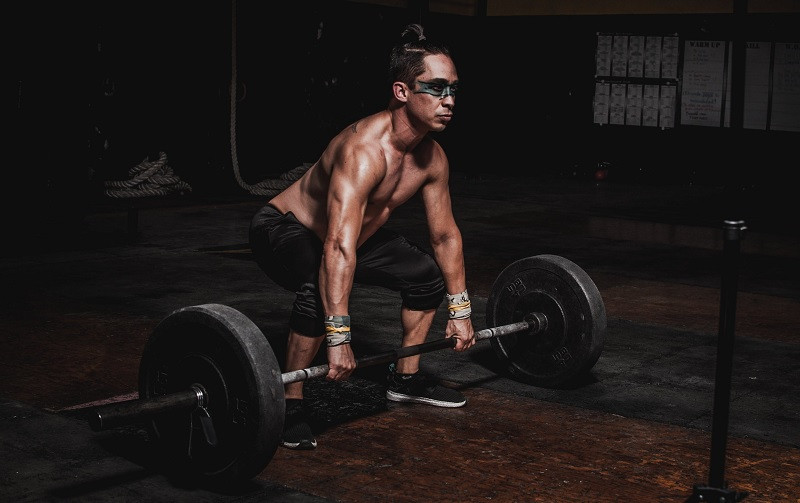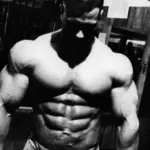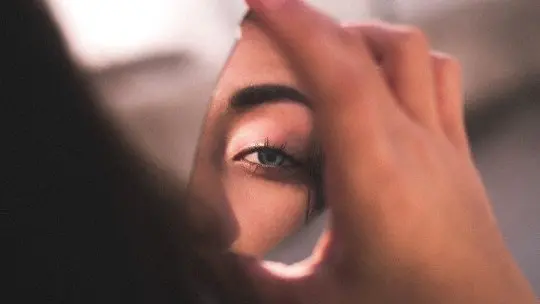Muscle dysmorphia, also known as vigorexia, is a disorder that affects many men, obsessed with being as muscular as possible, even if that means putting their own health at risk.
Many men who suffer from body dysmorphic disorder with muscle dysmorphia, when they look in the mirror, see someone thin, weak and soft in appearance, even though anyone who sees them will see them as very muscular people.
The main characteristics of vigorexia They have to do with substance abuse, excessive sports practice, diet control and many more. Let’s see what they are.
The main characteristics of muscle dysmorphia
Vigorexia, also known as Adonis complex and, more appropriately, body dysmorphic disorder with muscle dysmorphia, is a mental disorder characterized by the obsession with gaining muscle mass.
People who suffer from vigorexia experience a distortion of their body image, causing them to perceive themselves as people who are not muscular or strong enough. As a consequence, men with vigorexia exercise compulsively and determine their entire diet with the aim of quickly gaining greater muscle volume.
Vigorexia is not a strictly eating disorder, although it is true that it shares certain characteristics with them, especially with anorexia. In this last disorder, an obsessive preoccupation with the body figure is present and distortion of the body schema is also suffered. Anorexia mostly affects adolescent girls, while vigorexia affects men between the ages of 18 and 35. Body dysmorphia has a negative impact on the personal relationships of those who suffer from it, as well as their mental and physical health.
There are several characteristics that we can highlight about vigorexia. Among them, the most representative of the disorder are:
1. Perfectionism, high self-demand and other obsessive traits
Perfectionist men with a very inflexible mentality especially in matters of health and body image, are prone to manifesting this disorder.
Also, if you are a very self-demanding person, who always wants to reach the maximum and show that you are trying hard, it can be a trait that increases the probability of suffering from vigorexia.
People with obsessive personalities, especially with themselves, as well as those who suffer from various emotional problems in their personal and professional relationships, are more likely to develop muscle dysmorphia.

2. Difficulties in interpersonal relationships and emotional problems
Many men who meet the criteria for a diagnosis of vigorexia report working hard in the gym or pushing your body to the limit as a way of managing your emotional discomfort due to frustrating or failed interpersonal relationships.
Although this is not the case for all men, the idea is widespread in male culture that, after having gone through a very hard breakup or having suffered some intense emotional problem, the best thing to do is join the gym. and try to become the best version of ourselves. This “best version” is understood, on many occasions, as that of a highly muscular person.
Although there is no doubt that practicing regular sports implies benefits not only physically, but also mentally, the motivation behind it may be to try to improve a low mood and hope that by getting in shape all of our problems will automatically be solved. issues.
However, when we are emotionally down or going through a rough patch emotionally, the best thing to do is to go to mental health professionals or seek emotional support from family members or trusted friends. Practicing sports helps, but it should not be seen as the only therapeutic or personal improvement tool that we have at our disposal.
3. History of overweight and bullying
It is not at all strange that people who present vigorexia as adults were overweight as children, sometimes bordering on the morbid. In most cases, obese children become obese adults, but sometimes it happens that when they grow up they try to break completely with the past and begin to acquire a healthy lifestyle, characterized by making good dietary decisions and practicing sports. regularly.
However, there are many cases of people who go from one extreme to the other. Their desire to be muscular, their firm will to end their past self and become a radically different one, makes them obsessed with sports and setting very high goals, so much so that they even run the risk of injury. The motivation for wanting to be muscular is not due to health issues, but rather image issues.
This obsession can be especially intense if the person suffering from vigorexia was a child who was a victim of bullying, something that is usually the case with practically all boys and girls who are overweight. It is as if they wanted to show their “bullies” that they are no longer like that, that they are now very fit. and that, although they are now adults, if they had the opportunity to meet those people who caused them so much physical and emotional discomfort, they could now defend themselves by teaching their harassers a lesson.
4. Great concern about food
Vigorexia is not considered an eating disorder per se. , but it does share with disorders such as anorexia and bulimia nervosa the great concern towards diet. Vigorexic men seek speed in the process of achieving a sculptural body and eliminating all fat and, therefore, they usually follow diets with a lot of protein, while carbohydrates and fats are avoided.
This causes them to deprive themselves of many foods, which they see as “forbidden.” This aspect also affects their social life, since they cannot go out to eat with friends or appear at a family meal. They need to have complete control of what they eat , to ensure that your mass gain goals are achieved. Calorie counting applications cannot be missing from your mobile phones.
5. Consumption of illicit substances
Many people with vigorexia want to accelerate the process of gaining muscle mass by taking different food supplements such as protein powder and creatinine, substances that are not dangerous as long as they are taken under the guidance of a doctor and a nutritionist.
However, There are many who take illegal substances, such as hormones and anabolic steroids to stimulate muscle development. Although consumers know very well that these substances are dangerous, they consider that the benefits outweigh the harms and decide to take them, sometimes exceeding the doses considered dangerous.
Steroids are substances that are associated with several adverse effects, among which we can highlight: acne, testicular atrophy, poorer sperm quality, kidney and liver failure, and strokes. In women, steroid use affects the menstrual cycle and masculinizes them.
- You may be interested: “The 14 most important types of addictions”
6. Associated with injuries and body disproportion
As we have mentioned, people with vigorexia do sports compulsively, so much so that exercise becomes detrimental to their health. Many times, By pushing themselves harder than their body can handle, people with muscle dysmorphia are at risk for muscle and bone injuries.
There have been cases of people who have broken their spine when lifting bars with excessive weights, motivated by the desire to be the most muscular in the gym.
There is also the ironic fact that this muscle dysmorphia disorder can cause body disproportion. Sometimes it happens that people with vigorexia excessively train those parts whose perception is very distorted, such as the chest, legs or arms. Since they see these parts as thinner than they really are, they train them relentlessly, causing them to gain so much muscle mass that their body silhouette is actually disproportionate to their head.
- Related article: “Muscular system: what it is, parts and functions”
7. Fed by the male beauty canon
There are many people who consider vigorexia to be the anorexia of men. This statement is incorrect, since men can have anorexia and women can suffer from vigorexia. However, it is true that there are more vigorexic men and anorexic women than the other way around.
The reason for this is that Both disorders are fueled by the beauty canon of what an ideal man and woman is. In our society we understand an attractive man as someone who is very muscular, who exudes an image of virility, strength and fortitude, while an attractive woman is someone who is graceful and thin.
In the same way that the media has fed the image of extremely thin women as synonymous with beauty, influencing the minds of millions of young people, the same has happened with men. In the male case, they have been sold the idea that a man is not a man if he is too thin or fat, that he must be muscular if he wants to feel masculine and virile.
Are you looking for psychological assistance?
If you want to start a psychotherapy process to overcome emotional problems or problems related to self-esteem, whether psychopathological or not, contact me.
My name is Javier Ares and I serve both adults and adolescents in person and online.









